One of my favorite things about homeschooling is the flexibility to learn from what is happening around us and I’m always on the lookout for opportunities to do that. So when we heard there was going to be a solar eclipse visible from where we live, we dropped everything and shifted our focus to the science of eclipses.
The eclipse coincided with the vernal equinox on Friday, March 20. It was perfect that it fell on a Friday, giving us the whole week to learn and prepare, culminating with the event itself to end the week.
Emelie had been introduced to some of the basic concepts before when she’d started asking about where the sun goes when it’s dark and why is it cold in the winter and warm in the summer. We’d done our best to explain the basics, but since we were on our way somewhere and walking, we didn’t have props like balls and flashlights to help demonstrate. But she understood that the earth goes around the sun and that it spins around at the same time. So that was a good start.
Acting it out
Getting out different sized balls and a flashlight was really helpful for explaining some concepts, like day and night and a bit about the seasons. Because we live so far north, the kids have already understood from experience that the amount of daylight in the winter is a lot less (about 3 hours here at the solstice) than in the summer when it never gets completely dark. Explaining and demonstrating (with flashlight and ball) the equinox was a slightly more tangible process than it might have been at a lower latitude. But they’re 3 and 5 so I’m sure a lot of it still went over their heads.
And because they’re 3 and 5, they learn best when they can move. So understanding what happens when there’s a solar eclipse was something we acted out. Peter was the moon, Emelie the Earth, and I was the sun. So first the moon practiced going around the Earth. Then the challenge was for the moon to keep going around the Earth while the Earth was (slowly) going around the sun. As long as the Earth didn’t revolve too fast, the model worked okay. When I reminded Emelie that the Earth doesn’t just revolve but it also rotates, it wasn’t long before silly, dizzy, chaos broke out. Nevertheless, we were able to demonstrate the eclipse with our bodies, which helped a lot.
A 2-D model
We also made simple 2-dimensional models of the Earth, moon, and sun relationships. Of course, size and distance were hardly to scale, but we used paper fasteners to allow everything to spin and move. It was one more way to show the concept of eclipses, and a chance to check understanding, letting Emelie demonstrate it herself in assembling and using the model.
Last but not least, we watched this short clip from Bill Nye the Science Guy that quickly and effectively explains eclipses, and introduces a pinhole viewer, which is how we were planning to view the eclipse.
Viewing the Eclipse Safely
We chose not to order special glasses for viewing the eclipse. Though we might have enjoyed having them during the eclipse, we chose not to spend money and add more “stuff” to our lives. Instead, we made our own viewers by recycling items that we already had at home and added another learning opportunity to the event.
We chose instead to make three different kinds of pinhole viewers using paper plates, a Pringles tube, and a cereal box. Here’s how we made them and how well they worked for us.
The Paper Plates
The idea is simple and it was by far the simplest to make, but we wouldn’t recommend it. We didn’t feel like this kind of viewer helped us experience the eclipse at all.
Basically you put a hole in the center of one paper plate and hold another plate behind it to see the sun shine through the hole. It’s important that the hole is completely round, and even though ours looked round, we never saw any change as the eclipse occurred. One website suggested cutting a larger hole in the plate, covering the hole with aluminum foil and punching the hole through the aluminum foil. This might work better and make it easier to make the hole perfectly round, but we didn’t try that version.
Testing it in the kitchen before the eclipse started
The Pringles Tube
What I liked best about the Pringles tube is that it allowed you to face the sun and look through the tube. I felt this would be the most intuitive for the kids, and the most fun as it would be like a little telescope. We followed the instructions we found here.
This viewer didn’t work as well as we had hoped. If we were to do it again, we would make the distance between the hole and the lid (where it’s projecting) longer. In fact, we took it apart and tried to put it back together that way (which was hard outside in the wind without supplies) and it seemed to work better. But the fun factor for the kids in looking through a “telescope” worked out as we’d planned, and the kids had fun making it.
Making a hole in the metal bottom of the tube
Taping the tube back together with the lid in the middle
The Cereal Box
We had the most success with this version and even managed to get a few pictures of the “image” inside to show how it looked. We followed the instructions we found here using the largest cereal box we had. It was relatively simple to make and made it possible to see the changing shape of the sun as the moon moved across it.
First we traced the bottom of the box and cut out white paper to glue to the inside.
Then we made holes in both sides of the top of the box. One stayed open, the other we covered with aluminum foil.
Then we made a hole in the aluminum foil and used packaging tape to strengthen and reinforce the edges of the foil
Almost ready!
Holding the box this way with our backs to the sun, we looked in through the open hole in the top of box and could see a clear image of the sun shining through the hole in the foil onto the white paper in the bottom.
Starting to eclipse!
Peter: “It’s a macaroni! I see a macaroni in the box!”
Here in Skellefteå, Sweden, we experienced 88% coverage and had a cloudless sky for viewing it! We can’t expect to see another eclipse like this here for another 24 years so by then we could be viewing it with our grandchildren.
Anyone else have experience with pinhole viewers? How did you observe the eclipse (if it was visible where you live)?


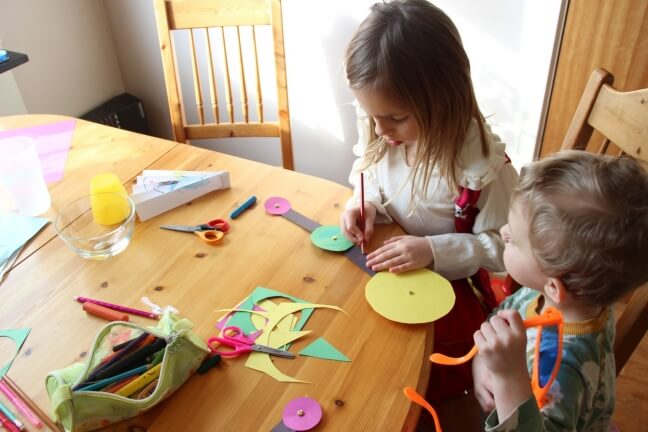
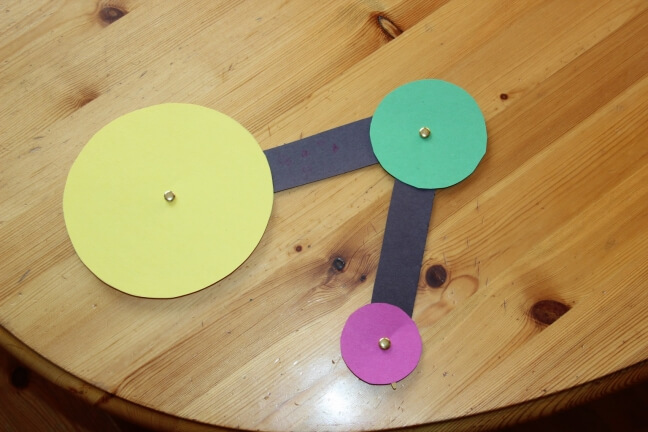
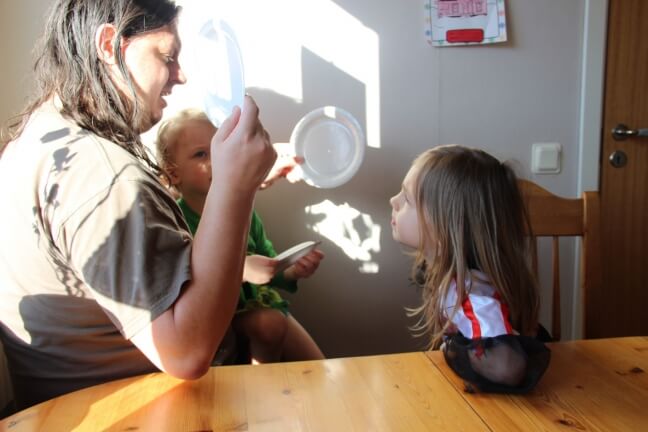

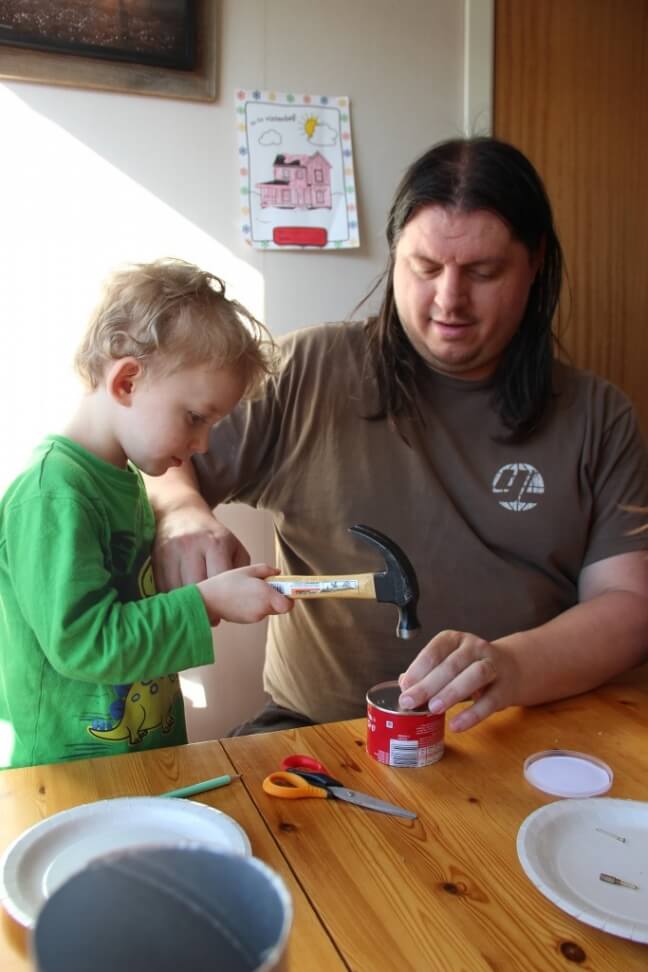
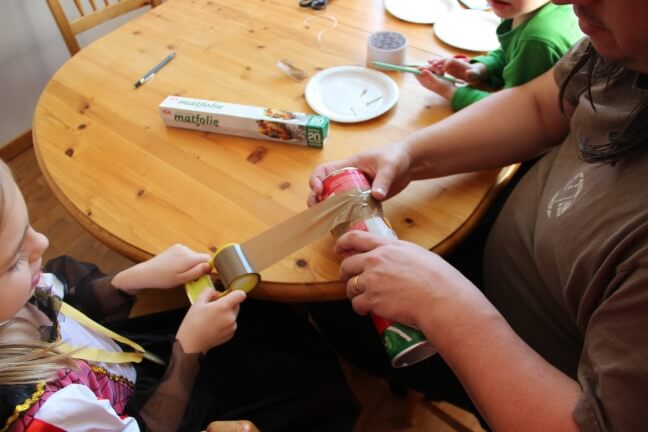
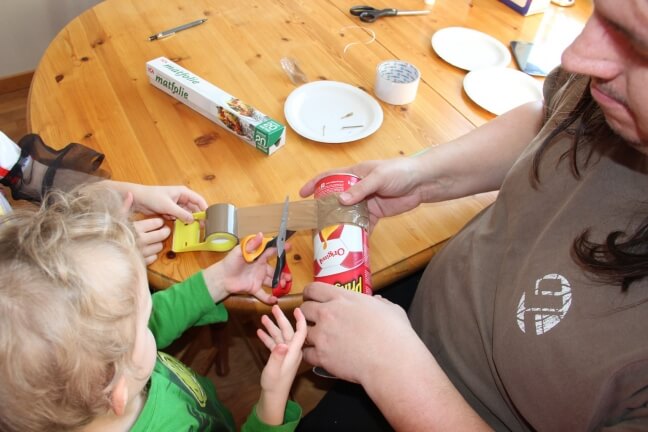
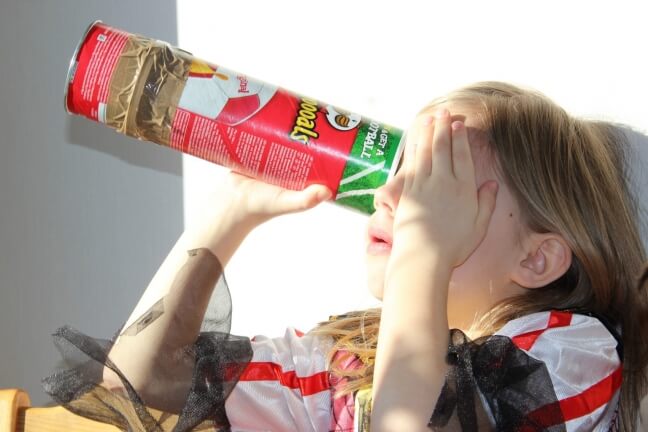

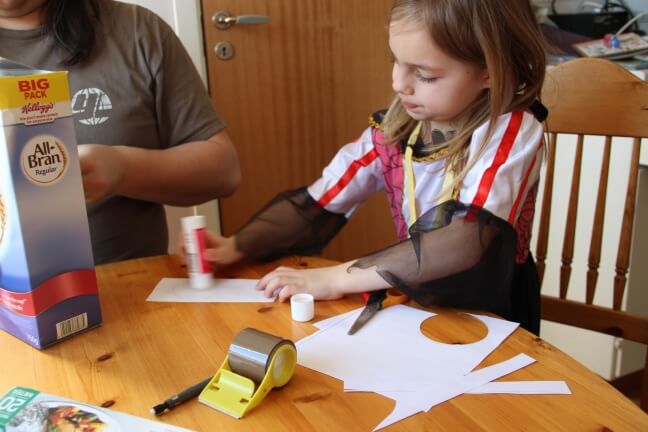
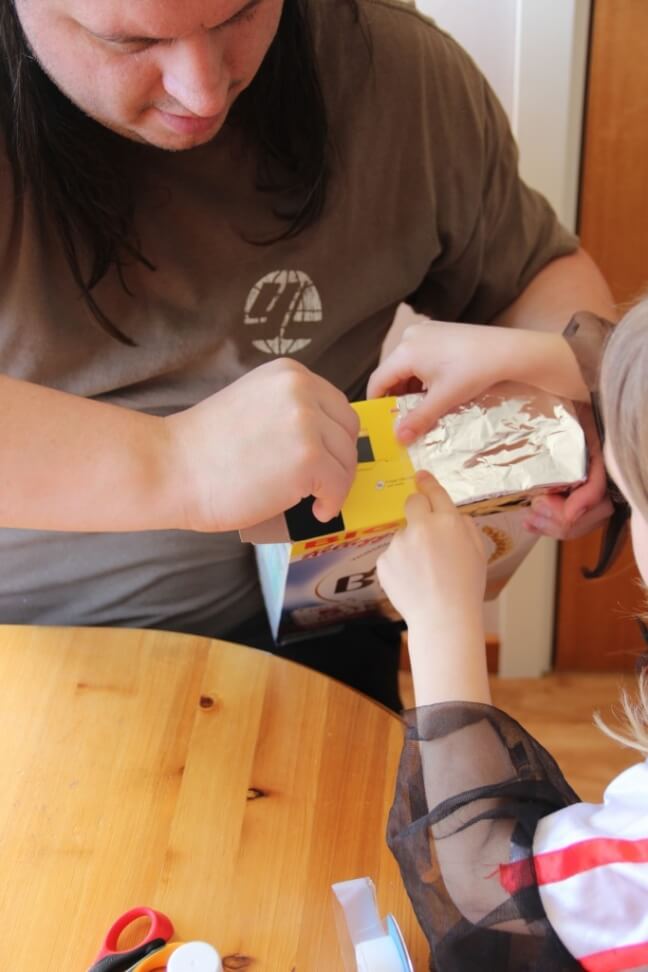

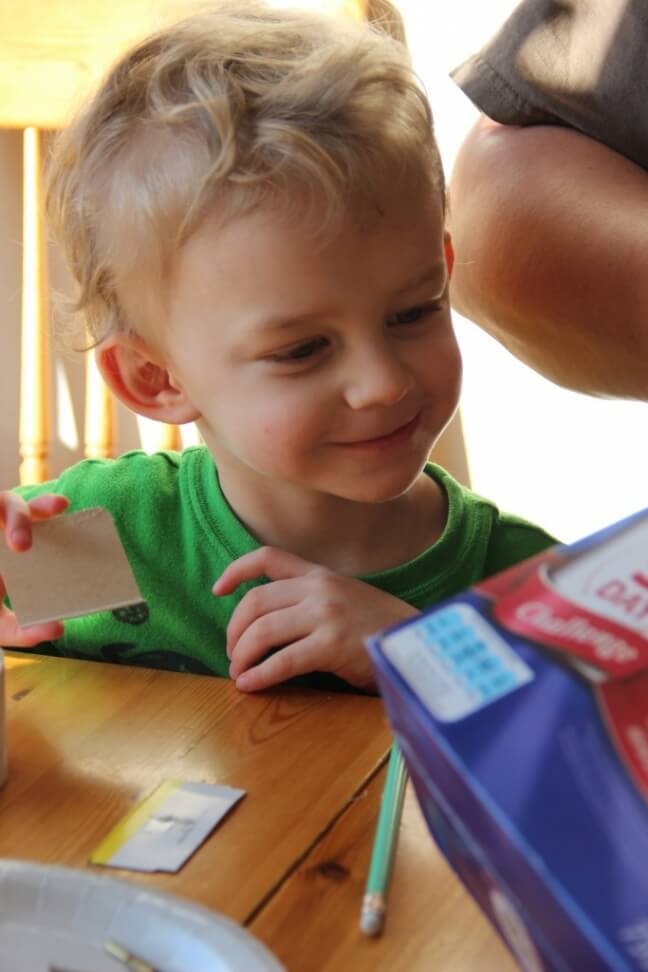
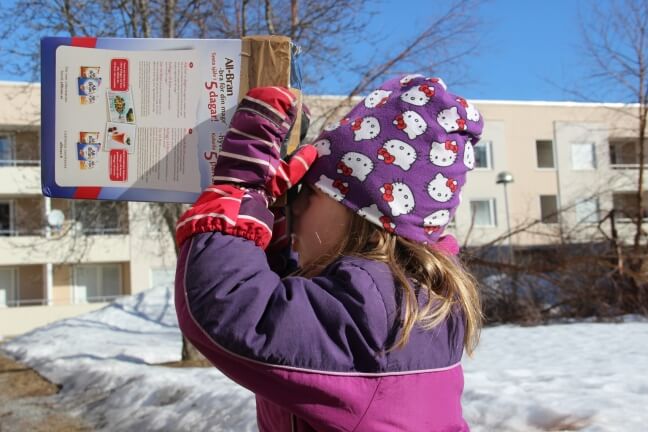
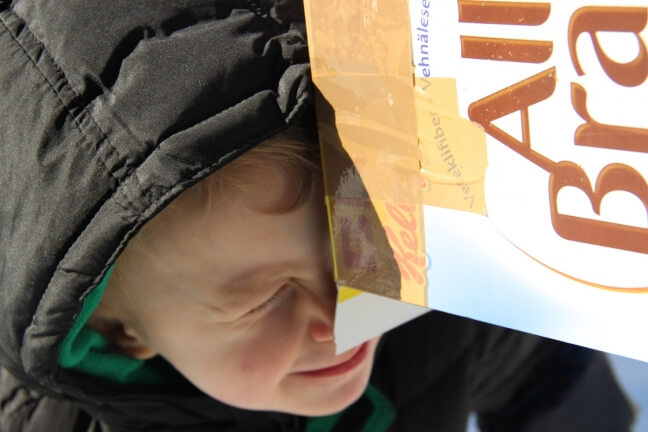



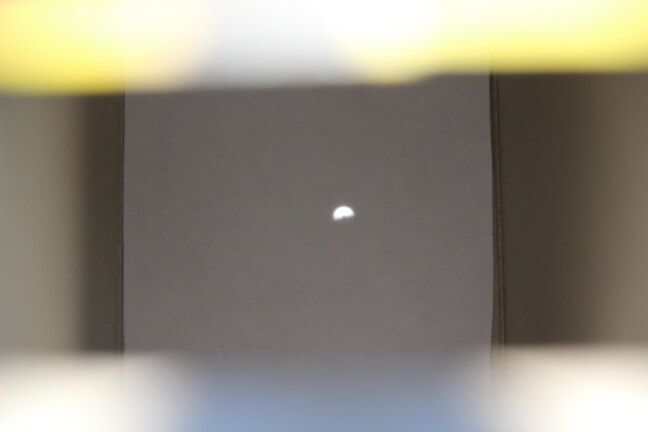
How cool was that! Right up there with seeing the Northern Lights on a northward Kirkwood Adventure Camp. Thanks for the detailed description of your eclipse viewers. Emilie and Peter are so cute!
Thanks Steve! The Northern Lights are definitely another amazing natural phenomenon. I think we’ll wait until they’re a little older to tackle that science though 🙂 Glad you enjoyed the post!